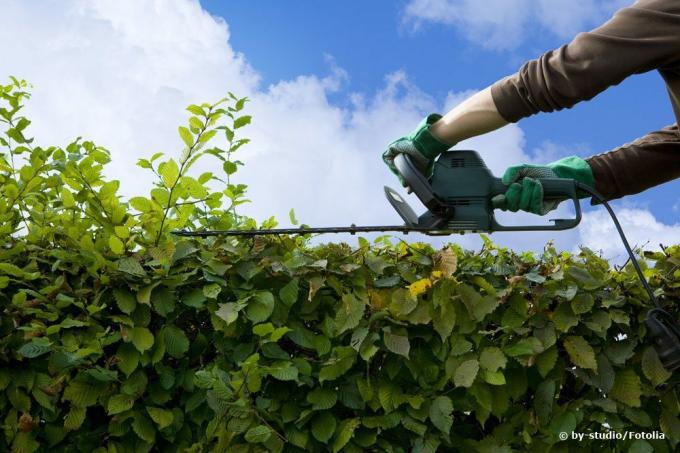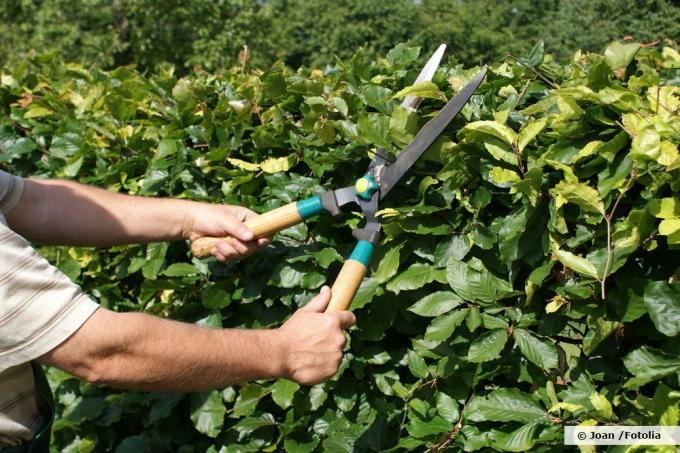
table of contents
- What does the law say
- What does that mean for me?
- The Hedge"
- The regulated measures
- What is still allowed?
- No rule without exception
- Consequences
Most people are aware that pruning is only permitted within certain periods of time. However, this also applies to all other woody plants. We explain when you can cut your hedges without coming into conflict with the law.
What does the law say
When it comes to the question of when hedge trimming is permitted or, above all, prohibited, there has been a uniform regulation for the entire Federal Republic of Germany since 2010. While the green cuttings were previously restricted depending on the state law, the Federal Nature Conservation Act, or BNatSchG for short, now applies across the country.
Paragraph 39 regulates in its fifth paragraph that between 01. March and 30. September may not be cut off or put on the stick.

What does that mean for me?
Legal texts are not always formulated in a clear and understandable manner. Therefore, it is now important to shed light on this legal requirement in terms of what it means for all of us and for each individual hobby gardener.
The Hedge"
First of all, it is important what is actually to be considered a hedge. Because depending on the topic and region, different terms can describe one and the same thing:
- hedge
- living resp. green fence
- green fence
- Bushes / bushes
- Other names
In general, it is about a regulation that describes trees below the tree line.

The regulated measures
Next, of course, the question of what is meant by pruning and “putting on the stick” plays a role. This question can be answered quite clearly and bindingly. The Federal Nature Conservation Act ultimately regulates all work that:
- change the growth habit
- reduce the growth volume
- Main shoots concern
- include a complete cut back down to a minimal root stock
Attention: Although it is clearly possible to determine the legally regulated measures, there is always a certain gray area between prohibited and unregulated, i.e. permissible, work. In order to avoid legal conflicts, in case of doubt you should rather choose the safe variant and limit work on the borderline to the specified permissible time periods.
What is still allowed?
A ban on Cut back- and clearing work in no way means that you are not allowed to work on your hedge at all. On the contrary. Because in the interests of protecting neighbors, you are even obliged to regularly cut back hedges and prevent the property line from overgrowing. Therefore, general shape and care pruning, i.e. the removal of overgrown shoot tips to preserve the shape of the hedge, are permitted all year round.

No rule without exception
This is where it gets particularly difficult. Because - how could it be otherwise - there are exceptions that can prevent work that is permitted all year round. To do this, it is helpful to take another look at the Federal Nature Conservation Act:
Paragraph 39 states in the first paragraph that it is forbidden "to impair or destroy the habitats of wild animals and plants without good reason".
In concrete terms, this means that any form of bird's nest, rodent housing or other immediate habitat for wild animals means the end of any hedge cut. For example, if you notice a bird's nest in your hedge, you will have to wait until the breeding season has ended and the nest has been vacated.
Attention: In conifers and densely leafy shrubs in particular, nests are often difficult to make out. Therefore, before making any pruning during the breeding season, be sure to thoroughly inspect all the bushes to be pruned before taking any action!
The Federal Nature Conservation Act specifies that only “reasonable reasons” are able to overturn the requirement. From a legal point of view, such a reason only exists if:

- danger for body and life
- Reasons of common good
- Traffic safety reasons
exist. For private individuals, the prohibition of cutting in animal housing is therefore legally binding and binding in almost all cases.
Consequences
Anyone who violates the aforementioned requirements of the Federal Nature Conservation Act commits an administrative offense. So whoever, ignorantly or even deliberately, performs cutbacks outside of the permitted time phase or despite a bird's nest performs shape cuts, can be fined by the responsible regulatory authorities will. The amount depends on the type and scope of the specific violation and can reach into the 5-digit range.



